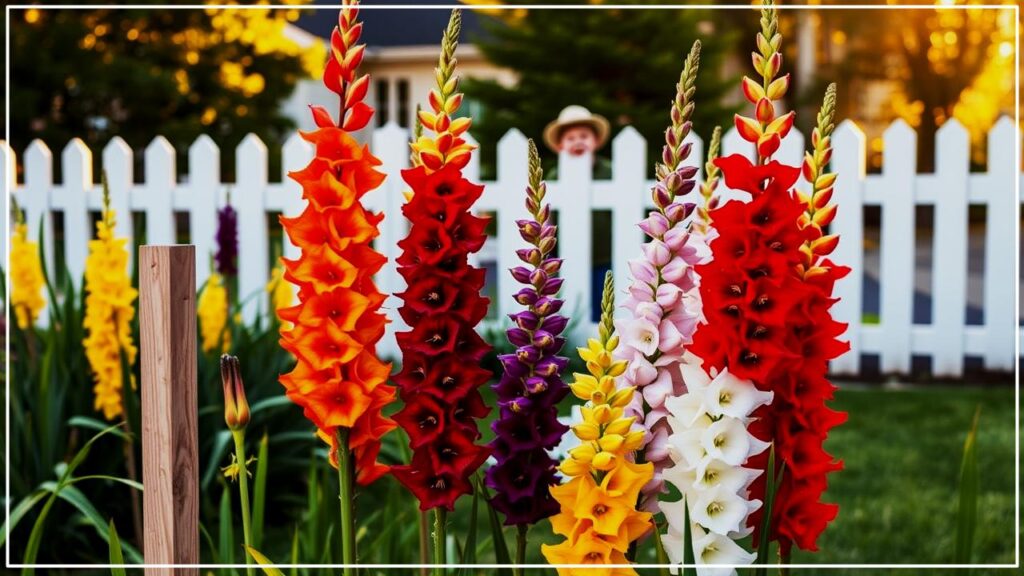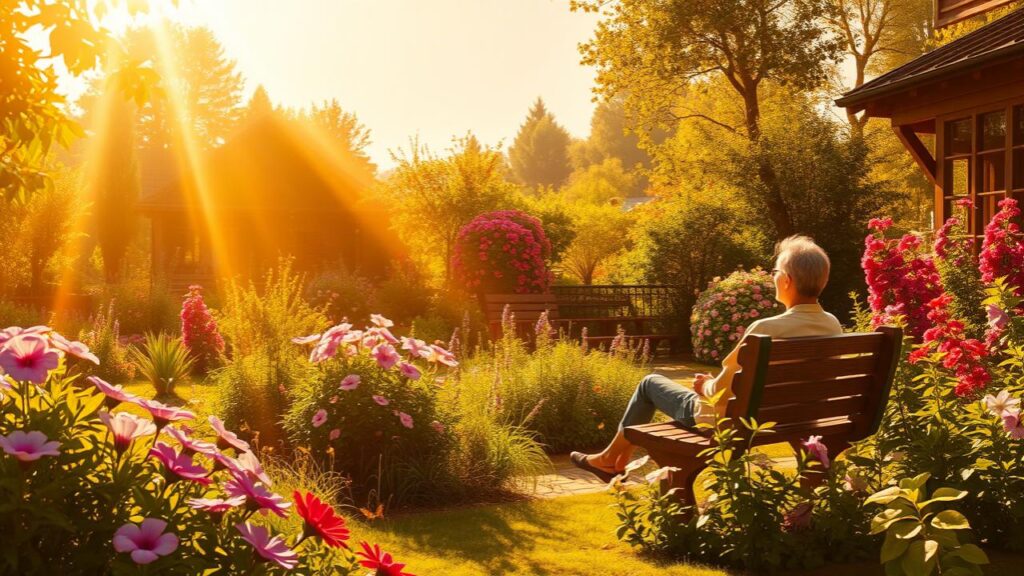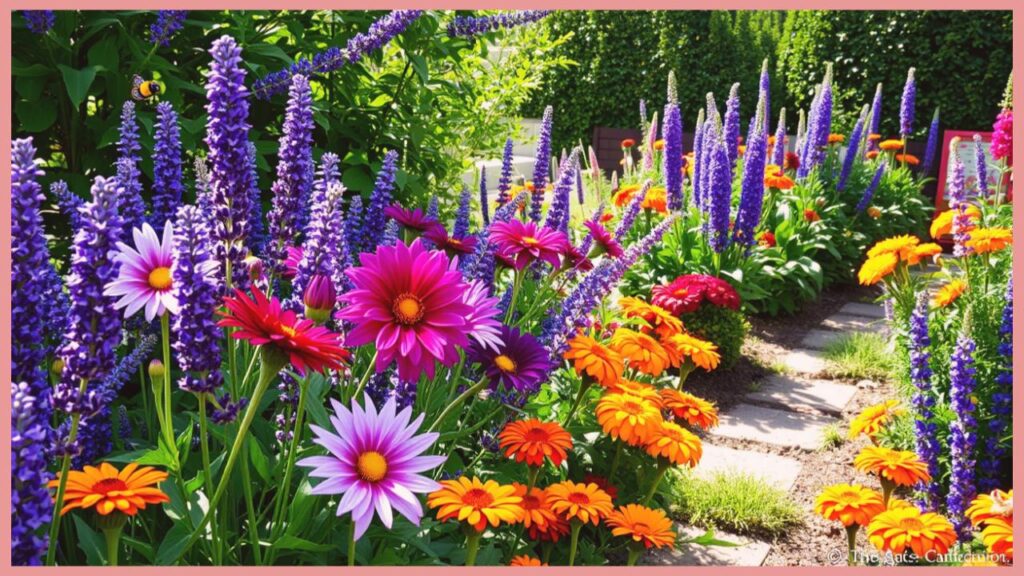Want your garden to be the showstopper of the neighborhood this summer? Whether you’re tending a backyard in Texas or planting a few bulbs in your city balcony, these simple but powerful tips will turn you into a gladiolus pro—even if you’re just starting out.
Gladiolus, also known as “glads,” are tall, elegant flowers that shoot up with vibrant colors and add instant charm to any garden. They’re surprisingly easy to grow once you know the basics—and that’s exactly what this guide is all about. From choosing the best spot to planting, watering, and storing bulbs for next year, we’ve got all the info you need in plain English.

This isn’t just another boring gardening article. It’s a friendly, no-fuss guide that’ll help you grow flowers your neighbors will admire—and maybe even ask for advice about.
Don’t Plant All at Once—Spread Out the Bloom Show
Instead of dumping all your bulbs into the ground at once, do yourself a favor—plant a few every couple of weeks starting in early spring. This little trick, called “succession planting,” means you’ll have fresh blooms popping up over and over again through the summer.
If you plant them all at the same time, they’ll bloom all at once—and then it’s over. But if you space them out, you’ll keep the party going in your yard all season long. Just jot down your planting dates and locations to stay organized.
Bonus tip: Mix different gladiolus varieties—some bloom earlier, some later. That way, you’re always getting new colors and heights to look forward to.
Skip the Row, Go for the Group
Sure, rows look neat. But if you want your garden to look full and lush, group your gladiolus bulbs together in little clumps—5 to 7 per group is perfect. Space each bulb about 5 inches apart in the group, and leave a bit more room between groups.
Why it works? It looks more natural, more like what you’d see in a wildflower field. And it gives your plants some support—tall gladiolus stems can lean on each other when the wind kicks up.
Pro hack: Put the taller varieties in the middle and shorter ones around the edges. It’ll look like a natural bouquet growing right out of the ground.
Sunlight Is Everything

Glads love the sun like a beachgoer in July. They need at least 6 to 8 hours of full sunlight every single day. Don’t skimp on this—too little light and your flowers will be weak, floppy, and underwhelming.
If your soil is heavy or clay-like, don’t worry—you can fix that. Just mix in compost, sand, or even some peat moss to help it drain better. Waterlogged soil is the fastest way to rot your bulbs. If you’ve got a yard with shady spots, pick the brightest place possible. Even partial shade can mess with blooming.
Water Like a Pro (Hint: Not Every Day!)
People often think plants want water all the time. Not true here. Gladiolus like a deep drink once a week—not a little sprinkle every day. About 1 inch of water weekly is the sweet spot.
Here’s the trick: water the soil, not the leaves. Wet leaves can lead to fungal diseases. A soaker hose or drip line works best.
If the weather is super-hot, check the soil more often. Stick your finger in about 2 inches. If it’s dry? Time to water. And for potted glads? They dry out quicker, so check more frequently.
Pro move: Add mulch around the base of your plants to keep moisture in and reduce watering needs.
Tall Flowers Need Backup
Some gladiolus can grow as tall as you—seriously, up to 5 feet! That’s awesome until a breeze knocks them down. So, do yourself a favor and stake them when you plant. It’s way easier than trying to fix a toppled flower later.
You can use bamboo stakes, tomato cages, or any tall garden support. Just tie the stalks gently with soft ties or string. Don’t strangle them—leave room for the stems to grow.
And if your garden is a wind tunnel? Plant next to a fence or wall for extra support.
Want Cut Flowers? Here’s the Right Way to Snip
If you want to enjoy your glads indoors (and you totally should!), cut the stalks when the bottom two or three flowers have opened. Use sharp scissors or garden shears and cut early in the morning. Flowers stay fresher when picked before the heat hits.
Drop them in water right away. Snip off the top bud if it hasn’t opened—it helps the rest of the flowers bloom better.
Switch out the water daily and trim the stems every couple of days. Keep them away from fruit, especially bananas—they release gas that makes flowers wilt faster.
Cold Winters? Time to Dig ‘Em Up

Live somewhere with freezing temps? You can’t leave gladiolus bulbs (called corms) in the ground over winter. Once the leaves turn yellow and die back, gently dig them up.
Brush off the soil and let them dry out for a few days. Then store them in paper bags or mesh sacks in a cool, dry place like a basement. The goal is to keep them dry but not bone dry—around 40–50°F is ideal. Check them once a month through winter to make sure nothing’s molding or shriveling. Label your bags so you remember what’s what come spring.
What to Do Based on Where You Live
| USDA Zone | What To Do |
| Zones 7–11 | Leave bulbs in the ground year-round |
| Zones 3–6 | Dig and store bulbs before winter |
| Below Zone 3 | Use containers and bring them indoors |
Beginner-Friendly Gladiolus Varieties
If you’re just starting out, try these dependable, colorful options:
- Black Beauty – Deep red and bold
- White Prosperity – Classy and elegant
- Princess Margaret Rose – Orange and yellow fireworks
- Purple Flora – Rich, royal purple
- Nova Lux – Bright yellow and cheerful
These grow well in most areas and are perfect for cutting, too.
Great Garden Companions

Want to boost your blooms and ward off pests? Plant these with your glads:
- Marigolds – Bug repellents and colorful friends
- Larkspur – Adds height and texture
- Dahlias – Look great and thrive under the same care
- Lavender – Smells good and deters pests
Avoid root crops like carrots or onions nearby—they’ll compete for space.
Oops! Avoid These Common Mistakes
- Planting bulbs too shallow (go at least 4–6 inches deep)
- Forgetting to stake taller varieties
- Leaving bulbs in the ground in cold zones
- Overwatering or planting in soggy soil
- Ignoring early signs of pests like thrips or rust
Don’t stress—mistakes happen. But now you know what to look out for.
Quick Fixes for Common Problems
- Yellow Leaves? Probably poor drainage—check the bulb.
- Lots of leaves, no flowers? Too much nitrogen in your soil. Switch to a bloom booster fertilizer.
- Stems breaking? Stake sooner or plant in more sheltered spots.
- Cut flowers fading fast? Change water daily and keep them away from heat and fruit.
